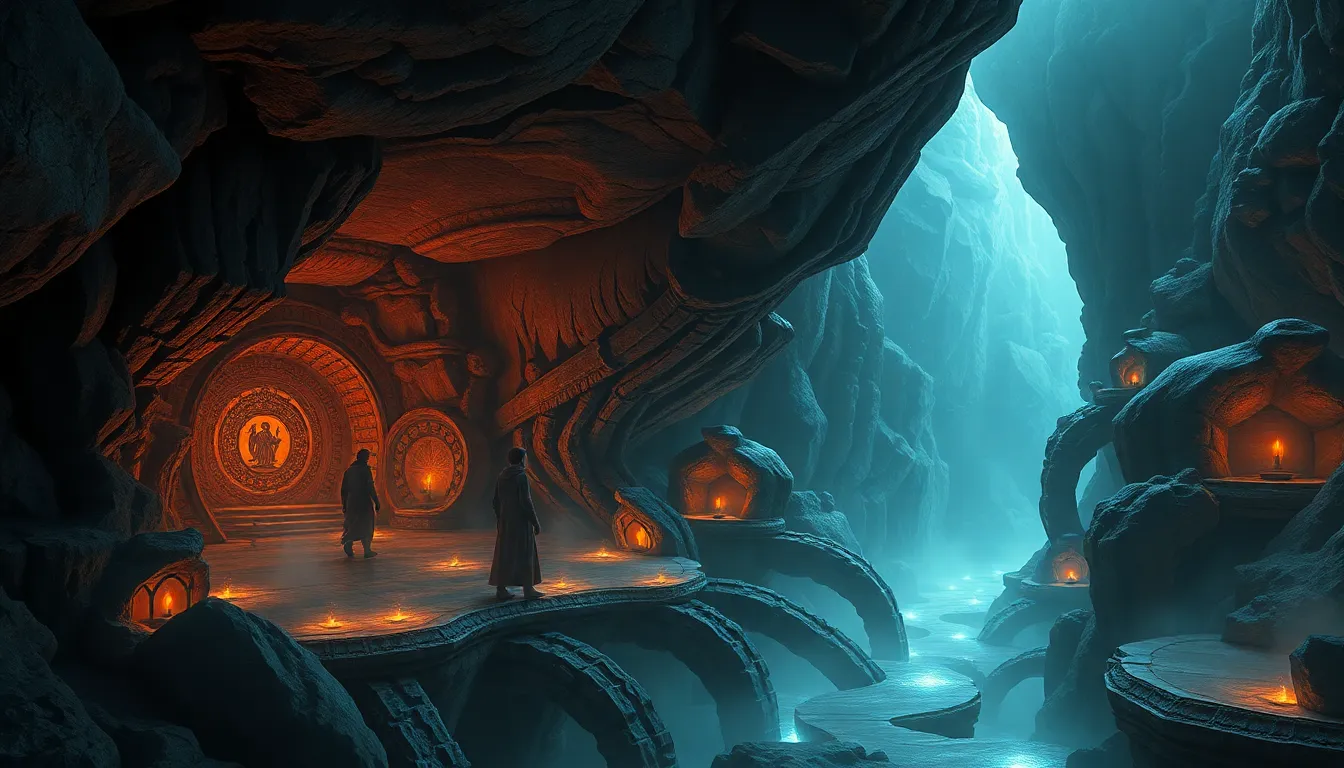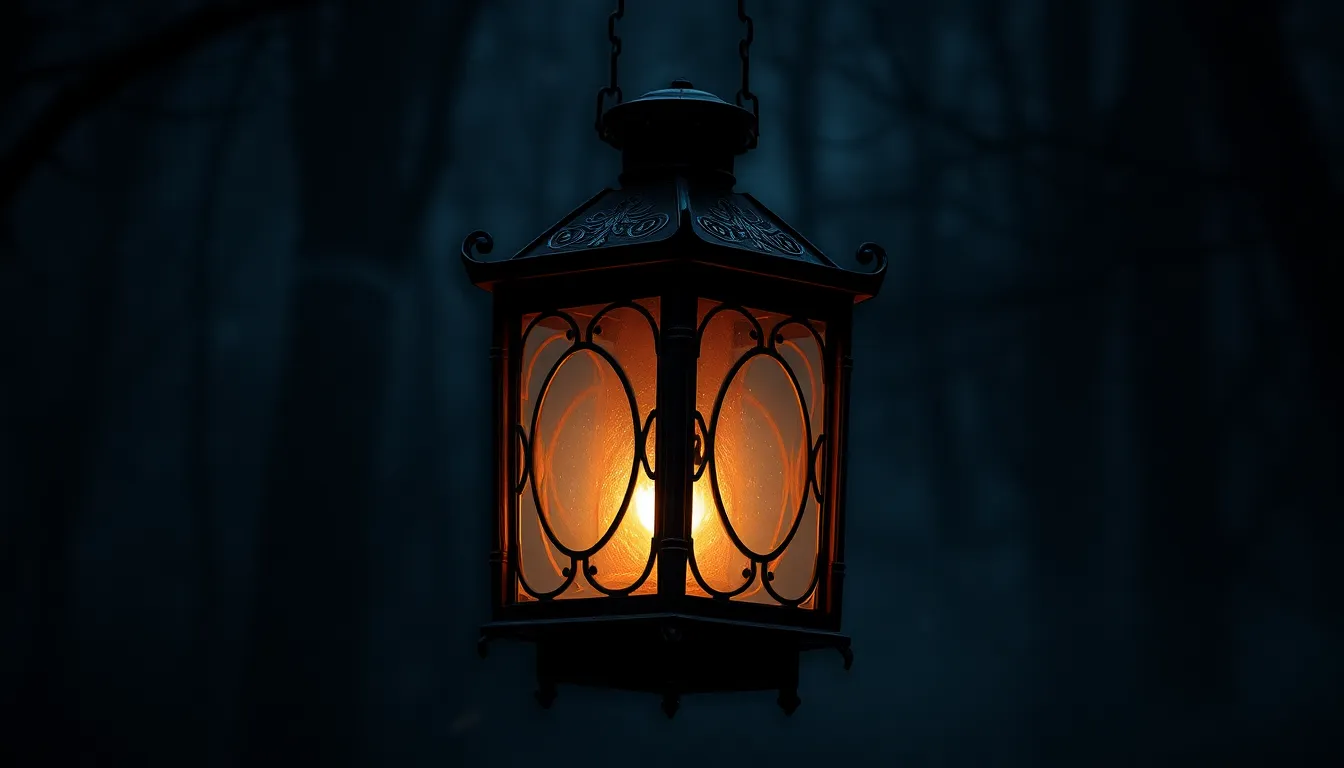Exploring the Underworld: Myths That Will Leave You Spellbound
I. Introduction to Underworld Myths
The concept of the underworld is as ancient as humanity itself, finding its way into the myths and legends of numerous cultures across the globe. The underworld, often depicted as a realm of the dead, serves as a crucial backdrop against which tales of morality, consequence, and the afterlife unfold. These myths not only shape the cultural landscape but also reflect the shared human experience of grappling with mortality.
In this article, we will delve into the various interpretations of the underworld across different cultures, explore the notable figures that inhabit these realms, and examine the profound symbolism embedded within these narratives. Additionally, we will investigate how these ancient stories resonate in modern literature, art, and psychology, highlighting their enduring impact on society.
II. The Concept of the Underworld Across Cultures
Different cultures have developed unique interpretations of the underworld, each reflecting their beliefs, values, and understanding of life and death. Here are some prominent examples:
A. Greek Mythology: Hades and the Realm of the Dead
In Greek mythology, Hades is both the name of the god who rules the underworld and the realm itself. It is depicted as a shadowy place where souls go after death. The Greeks believed in various regions within Hades, such as the Elysian Fields for the virtuous and Tartarus for the wicked.
B. Egyptian Beliefs: The Duat and the Journey of the Soul
The ancient Egyptians viewed the underworld as the Duat, a complex and treacherous realm that the deceased must navigate to achieve eternal life. Here, the soul would face challenges and judgments, most notably the weighing of the heart against the feather of Ma’at, the goddess of truth and justice.
C. Mesopotamian Views: The Land of No Return
In Mesopotamian mythology, the underworld is often referred to as the Land of No Return. It is a dreary place where all souls go, regardless of their deeds in life. The underworld is ruled by the goddess Ereshkigal, and offerings were made to appease her and ensure a peaceful passage for the dead.
D. Hinduism: Naraka and the Cycle of Rebirth
Hindu beliefs about the underworld, particularly Naraka, are tied to the cycle of rebirth (samsara). Naraka is seen as a place of purification for souls who have committed sins. After serving their time in Naraka, souls are reborn into the world, presenting a chance for redemption and growth.
III. Notable Figures of the Underworld
Various deities and figures occupy the underworld across different mythologies, each embodying unique aspects of death, judgment, and the afterlife:
A. Hades: The God of the Greek Underworld
Hades is often portrayed as a stern but fair ruler. He is not inherently evil; rather, he maintains balance in the realm of the dead and oversees the souls that enter his domain.
B. Osiris: The Egyptian God of Afterlife
Osiris represents resurrection and eternal life. After being murdered and dismembered by his brother Set, he became the god of the afterlife, symbolizing the cycle of death and rebirth.
C. Yama: The Hindu God of Death
Yama is the first mortal to die and the lord of Naraka. He is depicted as a judge of the dead, determining the fate of souls based on their actions in life.
D. Anubis: The Egyptian Guide to the Afterlife
Anubis is known for his role in guiding souls to the afterlife and overseeing the mummification process. His image often features a jackal, symbolizing his connection to the dead.
IV. Underworld Myths and Their Symbolism
Underworld myths are rich in symbolism and often convey deeper meanings regarding life, death, and morality:
A. Themes of Death and Rebirth
Many underworld myths highlight the cyclical nature of existence, illustrating that death is not an end but a transition to another state of being.
B. The Significance of Judgment and Morality
Judgment is a recurring theme. Many myths emphasize that one’s actions in life directly influence their fate in the afterlife, reinforcing moral teachings.
C. The Journey of the Soul and Its Implications for Life
The soul’s journey through the underworld serves as a metaphor for personal growth and the struggles of life, encouraging individuals to reflect on their choices and the legacy they leave behind.
V. Famous Underworld Myths and Legends
Some myths stand out for their powerful narratives and lasting impact on culture:
A. Orpheus and Eurydice: Love that Conquers Death
This tale follows Orpheus, who descends into the underworld to retrieve his beloved Eurydice. His journey underscores the power of love, but also serves as a cautionary tale about the consequences of doubt.
B. Persephone and the Changing Seasons
Persephone’s abduction by Hades explains the cycle of the seasons, representing the duality of life and death as well as the eternal connection between the earth and the underworld.
C. The Epic of Gilgamesh: A Quest for Immortality
In this ancient epic, Gilgamesh embarks on a journey to discover the secret of eternal life, ultimately learning that mortality is an inherent part of the human experience.
D. The Twelve Labors of Heracles: Retrieving Cerberus
One of Heracles’ tasks involves descending into the underworld to capture Cerberus, the three-headed dog. This myth highlights heroism and the confrontation of one’s fears.
VI. Modern Interpretations of Underworld Myths
Underworld myths continue to inspire contemporary literature, film, and art:
A. Literature: From Dante’s Inferno to Neil Gaiman’s Works
Literary works often revisit underworld themes, exploring the human condition through allegorical journeys into realms of the dead.
B. Film and Television: Portrayals of the Underworld
Movies and shows frequently adapt these myths, using them to explore complex themes of death, morality, and redemption.
C. Art: Depictions of Underworld Themes Through History
Artists have long portrayed underworld themes, from the haunting imagery of medieval paintings to the vibrant interpretations in modern graphic novels.
VII. The Psychological Aspects of Underworld Myths
These myths also hold significant psychological insights:
A. Archetypes and the Collective Unconscious
Underworld figures often serve as archetypes in the collective unconscious, representing universal themes of fear, transformation, and the unknown.
B. The Underworld as a Metaphor for Personal Struggles
The journey to the underworld can symbolize personal challenges and conflicts, reflecting the human experience of facing one’s inner demons.
C. Coping with Death: How Myths Help Us Understand
Underworld myths provide frameworks for understanding death, offering comfort and insight into the nature of existence.
VIII. Cultural Impact of Underworld Myths
The influence of underworld myths extends into various aspects of culture:
A. Influence on Religious Practices and Beliefs
Many religious traditions have been shaped by these myths, incorporating elements of the afterlife into their teachings and rituals.
B. Role in Shaping Cultural Narratives and Identity
Underworld myths contribute to cultural identities, shaping how societies perceive life, death, and morality.
C. The Enduring Legacy of Underworld Tales
Ultimately, the stories of the underworld resonate deeply within the human psyche, offering profound insights into the nature of existence and our place in the universe.



